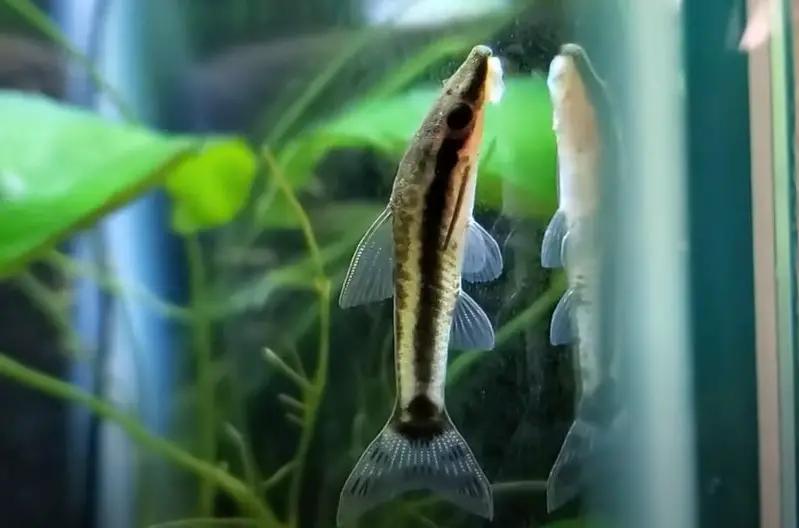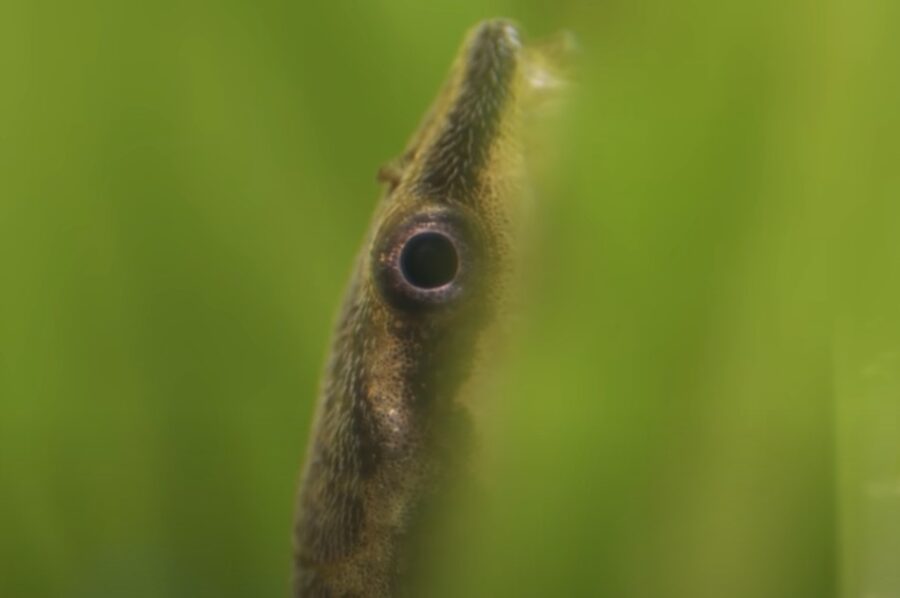Is it concerning that Otocinclus keep hiding? Are they shy or possibly sick? Let’s into it further because we’ll dedicate this article to the topic of Otocinclus that hide too much.
Why Are My Otocinclus Hiding? Shy Otocinclus that may have just arrived may hide at first. Fewer Otocinclus hide in groups because they like to shoal. Unsuitable tankmates, lack of planted areas, illness and poor water quality also causes excessive hiding.

Are Otocinclus Good At Hiding?
Otocinclus are mainly nocturnal, but you can still find them grazing or sucking algae to clean things up for you. They are also shy and tend to hide more when they are uncomfortable.
It can be hard to notice them on the opposite side of a piece of driftwood or in densely planted areas. Otocinclus enjoy the comfort of hiding spaces when adjusting to a new tank.
Sometimes we wish for them to finally make their way to the front of tank more often to greet us. You may notice clean spots on the glass that indicate their presence not too long ago. It’s common for you to not see your Otocinclus very often.
How Do I Get My Otocinclus Out of Hiding?
The following 7 tips are wide ranging and begin from the very starting point when you are choosing to stock Otocinclus.
- Pick actively suctioning Otocinclus from the local fish shop.
- Place a large leaf in the tank for grazing.
- Offer blanched or raw vegetables.
- They’ll come out for algae wafers.
- Add more rocks and driftwood.
- Add more Otocinclus.
- Main optimal water quality.
Out of these options, we think that if you choose 2-3 of them today or tomorrow, you should notice a difference with your Otocinclus coming out of hiding more often.
How Do I Pick The Best Otocinclus?
Two things for you to consider when visiting your local fish shop for Otocinclus.
- Go when they just arrived and pick the most active.
- Wait for the rest to settle for a few days and go back.
First, you want to choose the strongest Otocinclus. Seeing them working on the glass is an easy giveaway for a healthy Otocinclus.
Second, return to the shop before the next batch arrives to see which Otocinclus survived and remained hardy. Many Otocinclus do not survive in the shop during the first few days.
How Should I Feed My Otocinclus?
Since you are interested in getting your Otocinclus out of hiding, consider the following tips for feeding them.
- Out in the open
- On Rocks
- On A large leaf
- With a fork or skewer
If you place shrimp pellets or vegetables in planted areas or behind decorations, your Otocinclus will remain hidden from plain view. Try to create an open space for the best treats like algae wafers.
Place a large leaf and possibly add pellets on it. You can also put a fork or skewer through the center of the leaf with blanched or raw pieces of zuchinni, cucumbers or bell peppers on it.
These foods and feeding methods should hopefully bring out Otocinclus for a little while longer.

How Should I Set Up A Tank For Otocinclus?
Keep in mind that no matter what you do at first, your Otocinclus will still try to hide until some time passes to fully adjust. Add rocks for them to graze on. The algae that grows on rocks will be maintained and taken care of by Otocinclus.
Driftwood offers privacy in some spaces and open visibilty in others. This gives you a better chance at seeing your Otocinclus throughout the day.
Place bushy plants like wisteria or star-grass to limit their exposure to light and allow them the option of hiding when they need it.
Should I Add More Otocinclus?
If you have the issue of Otocinclus simply shying away all day and barely notciceable, then consider adding more of them. They are shoaling fish who enjoy their strength in numbers during times or perceived threats.
Your Otocinclus may be frightened when you step closer to the tank. In a group, they may not flinch as much or try to swim away from you.
6-8 Otocinclus would help them remain more comfortable and active. You can add as many as your tank allows because they are used to being in larger groups in the wild.

What Are The Ideal Water Parameters For Otocinclus?
Acclimate them slowly into any new tank. Take your time. This gives your Otocinclus time to adjust to any pH or temperature differences.
Here are some water parameters that are ideal for Otocinclus:
- Temperature: 72-79°F
- pH: 6.0-7.5
- GH: Less Than 15°
- KH: Less Than 10°
- Ammonia and Nitrites: 0ppm
- Nitrates: Less than 5ppm
Poor water quality cause many marine life including Otocinclus to hide. You may notice a swollen belly or lack of appetite. Water changes or a quarantine tank may help prevent Otocinclus from dying.
Conclusion
Otocinclus need time to settle in. They appreciate the hiding spaces we provide them. Otocinclus will remain in hiding for large periods of the day to rest. They are more active at night.
Allow them the time to hide, but entice them to come out when they see a large leaf or vegetables to munch on. Open spaces with rocks or decorations like driftwood will become another comfortable location for Otocinclus when they aren’t in dense planted areas or on the aquarium glass.
Make sure you test your water quality often and consider bringing more Otocinclus into your home for them to shoal when they feel like coming out to enjoy a more complete tank life.
Thank you for stopping by at HelpUsFish.com for all your informational needs concerning the fish you wish to keep in your aquarium. We have plenty of articles on a wide variety of marine life that may also pique your interest. See you again soon!
Table of Contents
